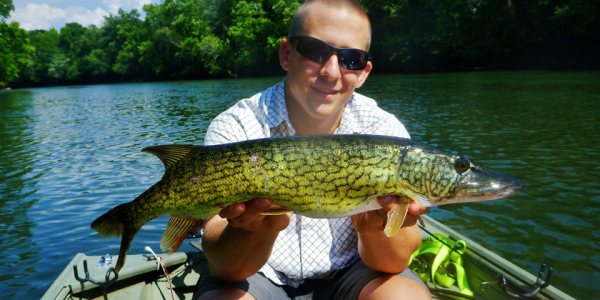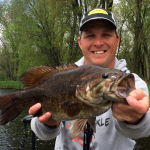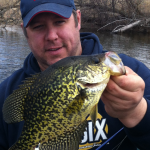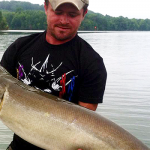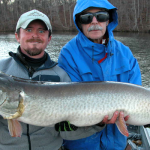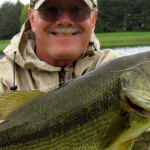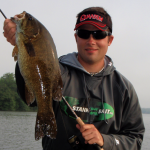By David Graham
Reluctantly, I must admit to being a bit of a ‘fair weather’ angler. I think it’s important to understand the movement of fish species seasonally, and though the successful pursuit of stubborn fish under cold conditions is essential to my quest of being a ‘complete angler’, I simply cannot stand cold weather! I have to admit that more often than not, once winter comes along I just stow away the gear and patiently wait for spring. I can only imagine how pathetic and spoiled I sound as a southern angler complaining of temperatures below 60 but above 40 being ‘cold’ while the northern boys are digging out the ice augers and staying active.
Like anyone else, I have my own preferences in how, where, and when I go fishing. I just prefer shallow water angling under conditions where I can detect fish visually and not have to rely on sonar or other equipment to find what I am looking for. This is where I run into problems when water temperatures drop low enough to send my favorite species to deeper waters. This is also where preparation meets opportunity for one species of fish I may have not ordinarily sought. Pickerel not only seem unperturbed by colder weather, they almost relish it, and the relative absence of other predators in these chilly conditions yields opportunity for the pickerel to declare its status as an apex predator.
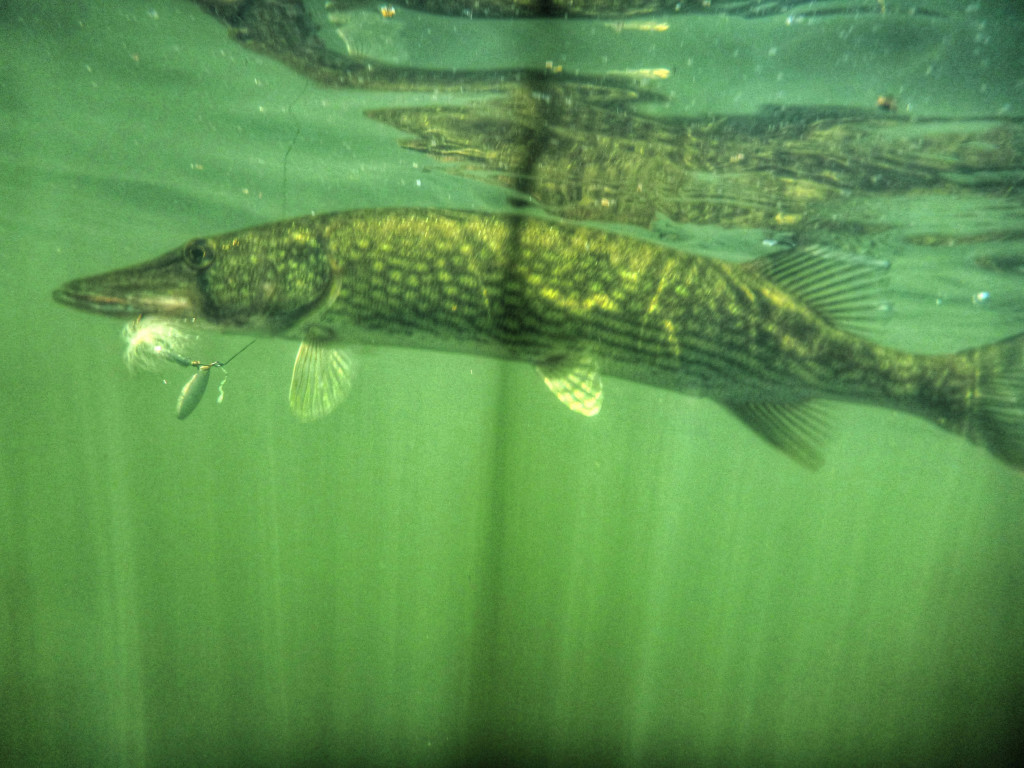
What pickerel lack in brawn they make up for in tremendous speed and raw aggression. It’s easy for the pickerel to fall to the wayside of their enormous cousins, but make no mistake about it, pickerel possess all of the same sporting qualities as a muskie or pike, just on a dramatically scaled down size. Proportionally scaling down the hardware to pursue these fish makes for a very exciting lightweight pursuit.
The most prevalent of the pickerel is the chain pickerel. Chain pickerel are a very common species in the Eastern United states, ranging from southern portions of Canada all the way down to Florida and as far West as Texas. Because of their voracious appetite and willingness to aggressively attack artificial lures, most bass anglers have encountered ole chainsides at some point in time. Though they get mixed reviews, most anglers who have experienced the fight of a pickerel contend that this is an exciting species that does put up a respectable fight.
Anglers seeking to specifically pursue pickerel should target shallow grassy margins where a still lying pickerel is nearly impossible to detect. Small prey fish patterns work especially well, but coaxing an unsuspecting pickerel into a bite is not particularly difficult. Pickerel are an ambush predator, and they are tremendously well equipped for this style of hunting. They are supremely camouflaged and their streamlined body shape gives them remarkable speed. Pickerel will often remain in particular areas or territories where they lay motionless until unsuspecting prey, or lures, should cross within close enough proximity to strike out. Pickerel are opportunistic, and will rarely turn down an easy meal. Because of this, it is not uncommon to find these fish with crayfish, smaller fish, frogs, and even other pickerel in their throats when captured. They will remain active in the shallows at all times of the year, though larger specimens will often retreat to deeper structure during the summer months. Generally, where larger congregations of small sunfish, shiners, or perch are found, the pickerel will not be far behind.
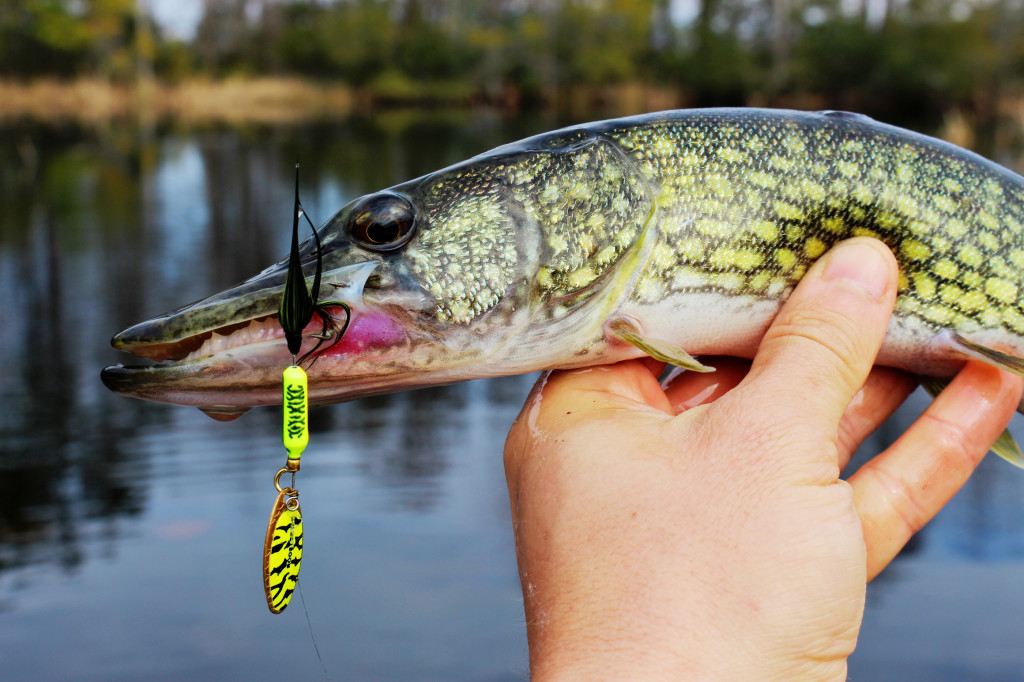
A two pound pickerel can put a furious strain on light spinning tackle and 8lb line, and these fish can grow in excess of 5 pounds. Anglers should keep in mind that the mouth of the pickerel is lined with sharp teeth that can compromise lighter line. It is important to examine the lead line for damage after every capture. Even a small pickerel will demonstrate disproportionate power and speed, and though they are no stranger to acrobatics, they will doggedly fight towards the safety of the weedlines, and thus a delicate chess match ensues balancing the fragility of risky light tackle with the necessity of powering the fish from snags. Small swimbaits, inline spinners, and rooster tails are especially effective but anglers should take into consideration the fish’s propensity to hang close to snags. Slow sinking weedless soft plastics are especially effective as pickerel typically remain higher in the water column, just underneath aquatic vegetation and timber. Pitching soft plastics onto weed beds and slowly crawling them over lily pads and grass can result in violent topwater assaults where even a small fish can send a geyser of water exploding into the air. Casting hard plastic stick baits, shallow running crankbaits, and spinners paralleling grass lines is perhaps most effective in luring the pickerel out where even the small specimens will quickly kick up a ‘V-wake’ as it closes on your lure. A small pickerel will happily take on a lure half its body length, so lure size is not overly important.
Like their larger cousins, pickerel are tougher in their element than they are outside of it. They are notoriously traumatized by the experience outside of their watery domain and thus it is critically important to return them to the water after admiring their unparalleled physical characteristics. A good pair of needle nosed pliers, and possibly a set of durable gloves should be at the ready to deal with unhooking the toothy mouth of the pickerel. Pickerel fatigue themselves tremendously during a fight and should not be withheld from the water longer than necessary.


